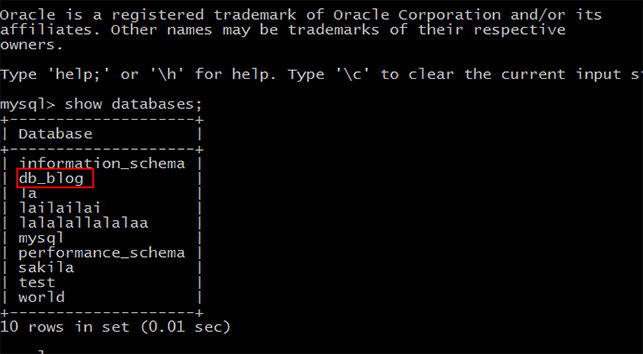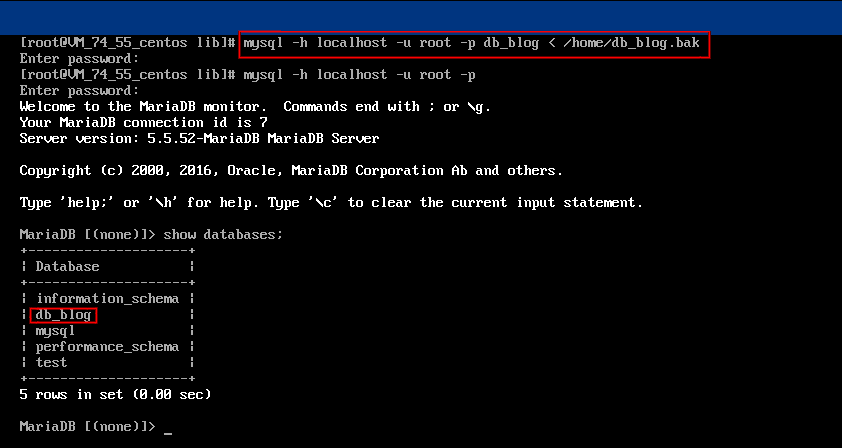通过命令行工具迁移
最后更新时间:2025-08-04 16:17:23
TDSQL-C MySQL 版支持通过命令行工具迁移数据。
命令行工具迁移数据
命令行工具迁移数据
1. 使用 MySQL 命令行工具 mysqldump 生成待导入的 SQL 文件,方式如下:
注意:
使用 mysqldump 导出的数据文件必须兼容所购买的云原生数据库 TDSQL-C(兼容 MySQL 版)的 SQL 规范,可登录云数据库通过
select version(); 获取相应的 MySQL 版本信息。生成的 SQL 文件名称允许英文/数字/下划线,但不能包含 “test” 字符。shell > mysqldump [options] db_name [tbl_name ...] > bak_pathname
其中,options 为导出选项,db_name 为数据库名称,tbl_name 为表名称,bak_pathname 为导出路径名。
更多 mysqldump 导出数据说明,请参见 MySQL 官方手册。
2. 还原数据库时,可以通过 MySQL 命令行工具进行还原,方式如下:
shell > mysql -h hostname -P port -u username -p < bak_pathname
其中,hostname 为还原数据的目标主机,port 为目标主机的端口,username 为目标主机的数据库用户名,bak_pathname 为备份文件的完整路径。
Windows 迁移数据
1. 使用 Windows 系统的 mysqldump 工具 dump 出数据,具体请参考 命令行工具迁移数据 中的描述。
注意:
请保证源和目标数据库版本一致,mysqldump 工具版本一致,源和目标数据库字符集一致。您可以通过参数
``--default-character-set``来指定字符集。2. 进入命令提示符,通过 MySQL 命令行工具进行还原。


3. 登录 MySQL 数据库可以查看到备份的数据库已经还原到服务器内。


Linux 系统迁移数据(通过 CVM 主机)
1. 以云数据库上的 db_blog 数据库为例。登录 CVM 主机,使用 MySQL 命令行工具 mysqldump 生成待导入的 SQL 文件。


2. 通过 MySQL 命令行工具进行还原,本例将数据还原到 CVM 服务器上。可以查看到备份的数据库已导入到目标服务器对应的数据库中。


导入数据文件字符集编码问题
1. 如果云数据库导入数据文件没有指定字符集编码,以云数据库设置的字符集编码执行。
2. 如果导入数据文件中有指定的字符集编码,则以指定的字符集编码执行。
3. 如果导入的数据文件的字符集编码与云数据库当前字符集编码不同,会造成乱码。
文档反馈

